Prologue
The March 2010 format; also known as Edison format is one of the most renowned formats in the game. Although this format would not stick around for long with the release of The Shining Darkness on the horizon, Edison featured a diversity of strong decks, variations, and interactive duels. Edison format got its name from the one SJC held during this short format which took place in Edison, NJ. In today's article, we'll take a stroll down memory lane visiting some of the format's strongest decks and information you'll need to get into the format.
An Introduction into Edison Format
Edison Format took place between the March 2010 ban list and the release of The Shining Darkness. Even though the format only lasted two and a half months, an abundance of new strategies appeared. Although Jeff Jones piloted Quickdraw Dandywarrior to the SJC Edison Championship, it's still unclear whether it was the "best deck" of the format. Edison featured a variety of decks in the Top 16 and with only 1 major event to test everything, the format was too short for a "winner" of the format. With that being said, one of the reasons Edison is so renown is due to the variety of "top decks'. With many options such as Machina Gadgets, Blackwings, Lightsworns, and even Gravekeeper Burn to play, Edison had one of the most diverse Top 16s in SJC history.
Edison Format Card Pool
Major Sets
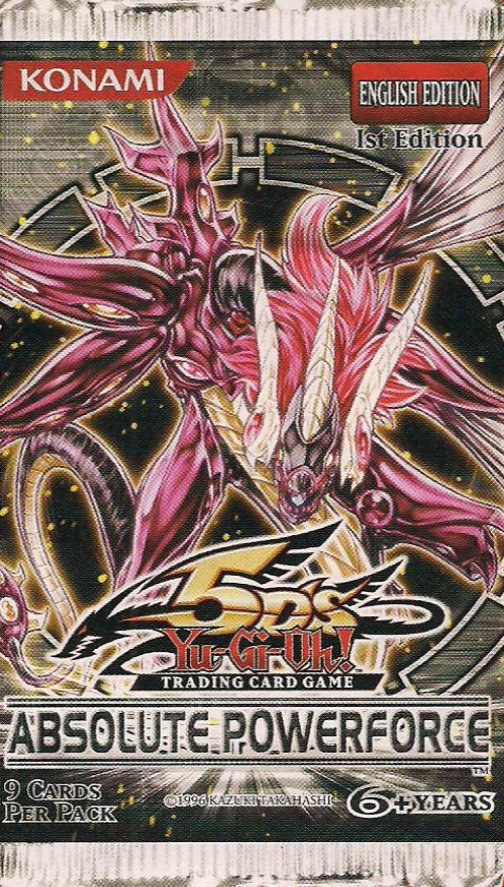
- TCG/International Boosters from Legend of the Blue-Eyes White Dragon (LOB) to Absolute Powerforce (ABPF)
- Reprint Sets from Dark Beginning I (DB1) to Dark Legends (DLG1)
- Duelist Pack Sets from Duelist Pack Jaden (DP1) to Duelist Pack Kaiba (DPKB) (April 2010)
- Hidden Arsenal 1 (HA01)
- Gold Series from Gold Series (GLD1) to Gold Series 2009 (GLD2)
- Movie Pack (MOV) (August 2004)
Sealed Sets
- Structure Decks from Yugi (SDY) to Machina Mayhem (SDMM)
- Starter Decks from Starter Deck Yugi (SDY) to Yu-Gi-Oh! 5D's 2009 (5DS2)
Promotional Cards
- Yu-Gi-Oh! Video Games released in the US/TCG between 2002 and 2010
- Manga Promotional Cards between Yu-Gi-Oh! Volume 31 to Yu-Gi-Oh! GX Volume 4
- TCG Tins between Original 2002 Wave and Duelist Pack Collection Tin 2010
- Pack Promos from Cyberdark Impact to Absolute Powerforce
- Shonen Jump Magazine Promos from JMP-001 to JUMP-033
Tournament Promotional Cards
- Duelist League sets from Set 1 to Demo 2010
- Hobby League Cards
- SJC/YCS Promos from 2004 to 2009
- Tournament Pack equivalent cards from Tournament Pack 1 to Turbo Pack 2
Ban List
https://yugioh.fandom.com/wiki/March_2010_Lists_(TCG)
Let's talk Gameplay
Edison Format hosted a wide range of skills at its highest level of play. Here are some basic tips during gameplay to help you get better at the format. Keep in mind that although these tips will mainly be using the top lists as reference material, Edison was short and still has many unexplored strategies. Feel free to try to make combos and decks for yourself.
Card Advantage
Unlike the modern game, Edison didn't really have any starting combos that allowed you to run through your entire deck or splash your hand onto the field. Although building a board was possible, it wasn't like the multiple negates you see in games today. Most games involved careful resource management and trying to make as many favorable trades as possible.
Card advantage in theory was a simple concept. Any action that results in a net positive of cards was gaining card advantage. Simple cards such as Pot of Greed is a very simple card that resulted in just a net +1. In Edison however, card advantage wouldn't come so freely. Cards like Pot of Avarice needed you to have prior setup before it would become playable. Gadgets often would commit your Normal Summon to play a low ATK monster. Even something as simple as Flamvell Firedog required you to play a "brick" in your deck. Card advantage also could come in ways you wouldn't expect.
An example of this would be the use of Gravekeeper's Spy. Although Spy required a 1 turn setup, it'll often net you an extra monster. To more experienced players, they chose to summon Gravekeeper's Descendant. Descendant would then be used to trade Spy as a 1 for 1 and then followed up with a potential Synchro or Tribute Summon. A follow up play such as going into Arcanite Magician could quickly turn your 2 card combo into a +3 or +4 depending on the board state.
Although most cards played in Edison were played to trade 1 for 1, well-timed responses could let cards potentially trade 2 for 1 or better. Cards such as Doomcaliber Knight that normally trade 1 for 1 could sometimes be optimized even further by beating over a monster. Utilizing every card to its fullest potential is essential in any format of the game and Edison was no different.
Card Interaction
Edison Format contained a lot of subtle interactions between cards that determined the pace of games. Although it could be said in any format, knowing the interactions between all your cards could create massive advantages in a match.
Quickdraw Dandywarrior is a great example of how subtle interactions between cards could lead to a terror in the format. The whole deck was built upon small combos that would create small but accumulating advantages. Interaction such as Debris Dragon and Quickdraw Synchron + Dandylion would create a stronger monster with 2 tokens. These tokens would be used to either Synchro again or could be tributed for powerful monsters such as Caius or Light and Darkness Dragon. In some instances, these tokens could even act as fodder for Tytannial.
Although Quickdraw Dandywarrior was probably the deck with the most of these interactions, other decks had small combos of their own. Blackwings for example had Shura into Vayu for a cheap Icarus Attack. Some decks also played Cyber Valley to net draws off the tokens from Dandylion. Mastering subtle interactions lead to efficient play that will also lead to more wins. It's because of this that the best Quickdraw Dandylion players saw success while the many people who just net decked blindly did not.
Reading Cards / Playing around Cards
During Edison Format, most of the non-engine/archetype cards played in decks were more or less the same. Most decks played Book of Moon, Bottomless, Starlight Road and your staple defensive trap cards. Most of the variance was found in the number of specific cards and/or techs you'd want to play. Specific cards such as Royal Oppression were only played in decks that could positively utilize it. Other cards such as Trap Dustshoot were played due to preference.
Because the Traps played in the format were almost pre-set, reading and playing around cards is very important. Playing Heavy Storm into 4 backrow could potentially win the game or run straight into a Starlight Road. In these situations, although it is statistically unlikely for the opponent to have Starlight Road, betting the game on them not having it was too risky for most players.
Understanding your opponent and their playstyle was almost just as important as knowing how to play the game itself. By relating to someone's playstyle, thoughts, and management, players could gain advantages by bluffing cards and misrepresenting your position. An example could be bluffing Mirror Force to lead your opponent into not attacking. Although this is still relevant today, this technique is more prominent in slower formats where players fight for the slightest of advantages. Mastery of reading and playing around cards often leads to more consistent success in every format of the game.
Notable Cards in Edison Format
Ryko, the Lightsworn Hunter

Ryko was a card that found itself in many decks during the format. Ryko's effect gave it versatility and contributed to the win conditions of many decks.
Ryko had a simple effect, FLIP: you can destroy 1 card on the field and send the top 3 cards of your deck to the GY. Although at 1st glance this effect doesn't seem splashable, flexible destruction and mill were essential needs in this format. Ryko's ability to destroy not only monsters but backrow allowed it to clear away problematic and potential threats. The milling effect also contributed to the strategies of decks that played Debris Dragon, Dandylion and Pot of Avarice.
Ryko was also accessible by Super Nimble Mega Hamster and Sangan. Some decks took advantage of this interaction by setting Ryko off Hamster on the opponent's turn. When it came back around to your turn, you could flip Ryko to pop a card and then sacrifice it for a Monarch.
Ryko was an iconic card in this format and was one of the reasons so many decks side Nobleman of Crossout. Although in the modern 2020 format, a card like Ryko would seem underwhelming to say the least, it definitely had a well-deserved spot in Edison.
Pot of Avarice
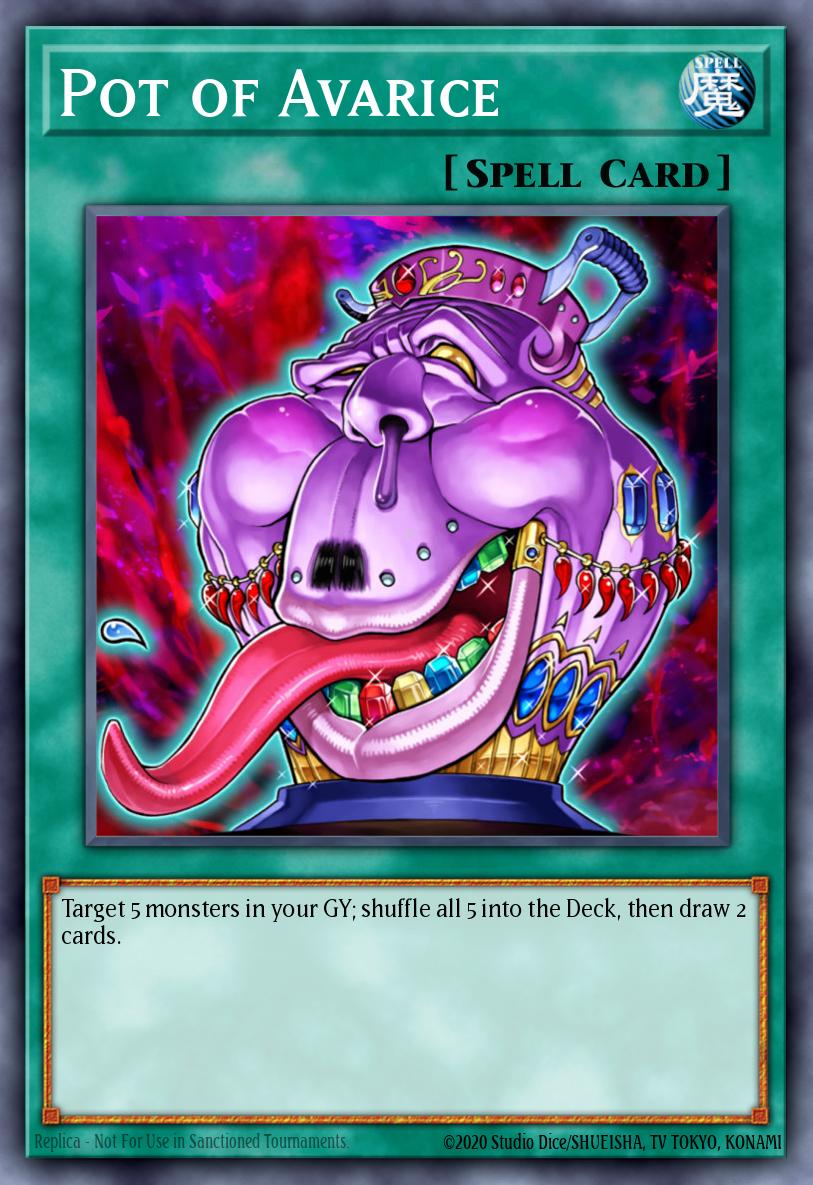
Pot of Avarice was a card that combined recycling resources while getting a +1. With many decks in the format running Ryko, Avarice was an easy inclusion to pair alongside it.
Avarice was a normal spell that allowed you to shuffle back 5 monsters from the GY into your deck and then draw 2 cards. The +1 on the card really made it great as many cards in this format were meant to trade 1 for 1. Avarice also allowed you to recycle powerful extra deck monsters such as Brionac, BRD, and Goyo as well as main deck power cards such as Debris Dragon. This card would shine even greater in decks that had multiple mill cards such as Lightsworns with their milling engine and Quickdraw Dandywarrior with Card Trooper.
Avarice was just a great mid-late game card for the majority of the meta. While being able to give your engine a soft reset and netting you more cards, the card just did a lot in the simplest way. Avarice would, later on, get Limited and then Banned not seeing light again until 2020 when it finally came off the ban list.
Cyber Dragon
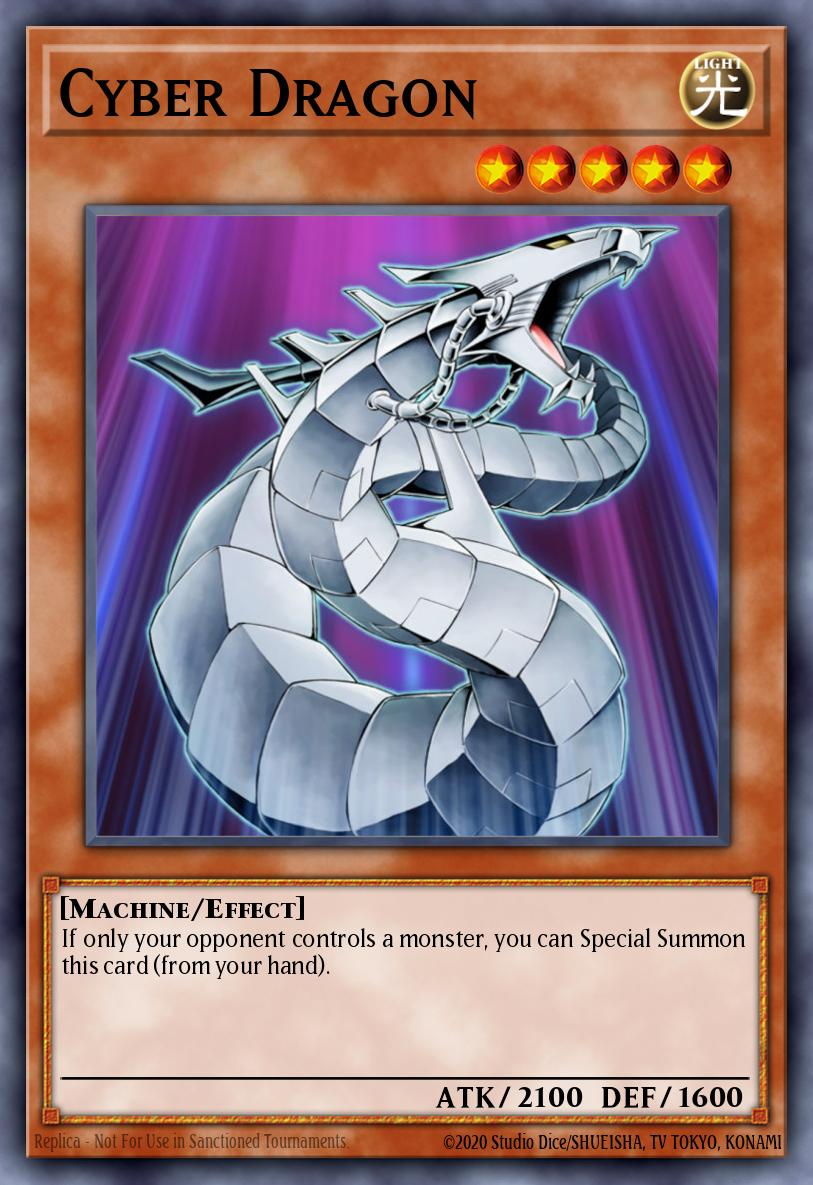
Cyber Dragon's release back in CRV made a meta-breaking impact. Although the card isn't as powerful as it was when it ended Goat Format, Cyber Dragon still does a lot in Edison.
Cyber Dragon in Edison format serves 2 main purposes. The 1st purpose is that it acts as a simple beater. With Gladiator Beasts and Blackwings still around, Cyber Dragon beat over common monsters. Cyber Dragon also conveniently beat over Debris Dragon's 2000 DEF and Super Nimble Mega Hamster when the situation called for it.
Cyber Dragon also acts as a pseudo-board clear against Machine-type decks. With Gadgets seeing a presence in the meta, Cyber Dragon can easily sweep up fields while netting you an often even more powerful monster to replace it. In some scenarios, Cyber Dragon can even turn into a 4000 ATK+ Fortress Dragon while removing scary cards such as Machina Fortress.
Black Rose Dragon
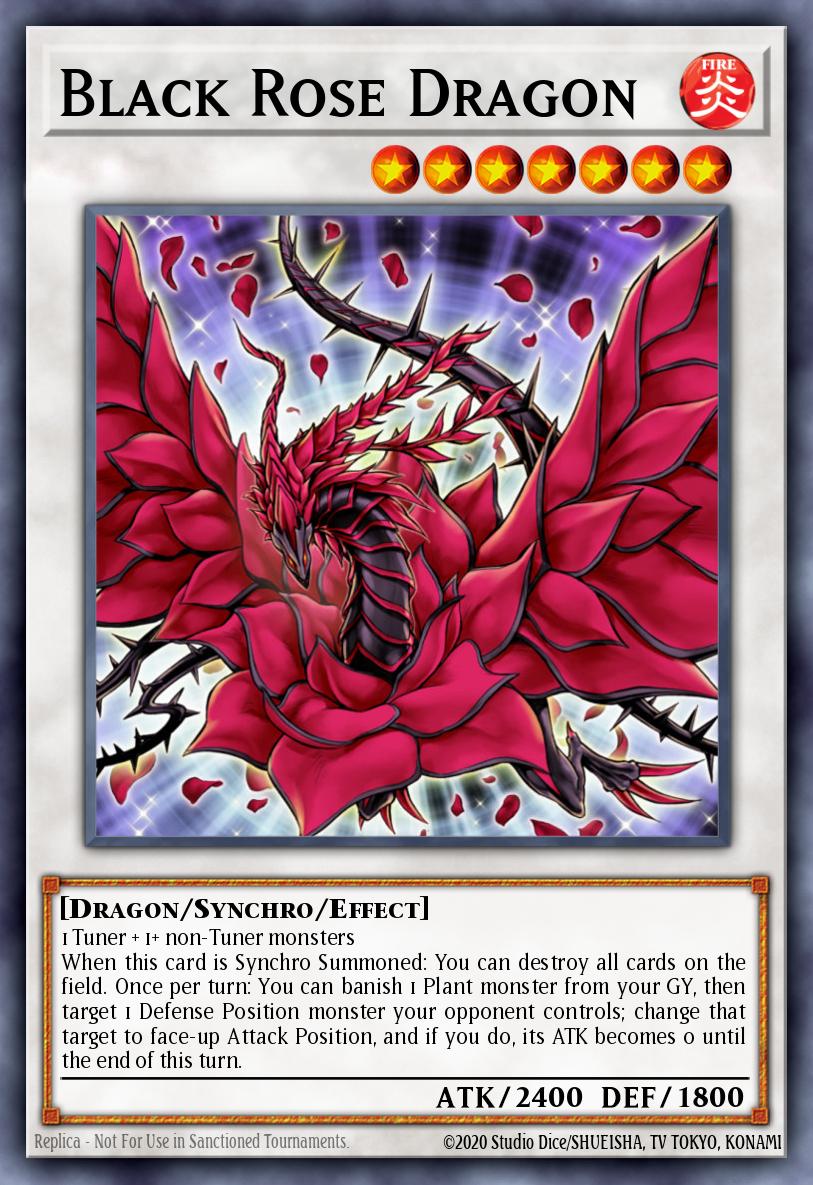
Black Rose Dragon was a generic Level 7 Synchro from Crossroads of Chaos. With a powerful effect, it quickly found itself as a staple in most Extra Decks.
Black Rose Dragon's effect to nuke the field upon being Synchro Summon is amazing. This effect was a great way to punish your opponents for over committing to the field. Without a reliable way of summon negation, an uncontested Black Rose would often immediately swing the advantage of duels in the user's favor.
Black Rose Dragon's second effect allows you to banish 1 PLANT from your GY to change 1 of your opponent's monsters to ATK position and reduce its ATK to 0. This effect saw some play in decks that chose to run a small PLANT engine. With Lonefire Blossom and Dandylion being popular cards, this effect would see use in Quickdraw Dandywarrior. This effect was also helpful in removing problematic monsters that had higher ATK than Black Rose.
Black Rose was just something that was very easy to go into. It was a level 7 generic Synchro and was a great punisher of the format. Although Black Rose was limited to 1, it could be recycled multiple times with Pot of Avarice. This made summoning Black Rose twice in a game very possible. With Black Rose being so impactful in games, it might have been one of the big reasons why Starlight Road and MBAAS was so common.
Book of Moon
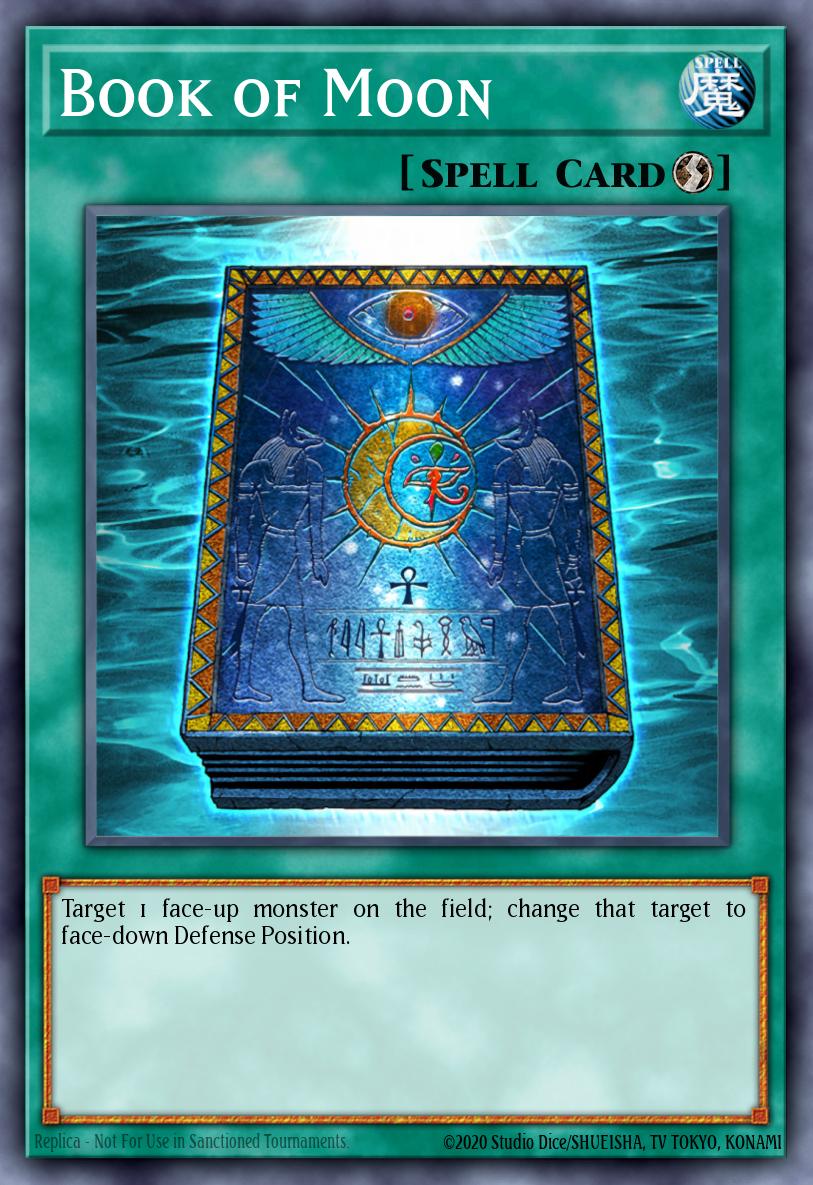
Book of Moon was EVERYWHERE in Edison. Although it was a -1, it's often well worth it to stop an opponent's big power play.
Moon was at 3 in Edison format and has a very simple effect. Although already well-known, Book could flip a monster to face-down defense position. This gave it tons of interactions both offensively and defensively.
In terms of offense, Book was great for resetting FLIP effect monsters such as Ryko, Gravekeeper's Spy, and Mega Hamster. This would often net you extra monsters which were very strong in a format where card advantage was so important.
Defensively, Book was just a great answer to blocking attacks. Being able to halt strong attackers such as Shura, Firedog and Glads, Book was a great temporary solution to a monster you can deal with next turn. Book could also help play around Dimensional Prison and Mirror Force; protecting monsters you want to keep and flipping them back if they haven't yet declared an attack.
Book was all-around just a great card. It had uses both offensively and defensively and could both save and win games. Although it just seems like a -1 on paper, there was a reason why almost every deck played two or three.
Popular Decks in Edison Format
Quickdraw Dandywarrior
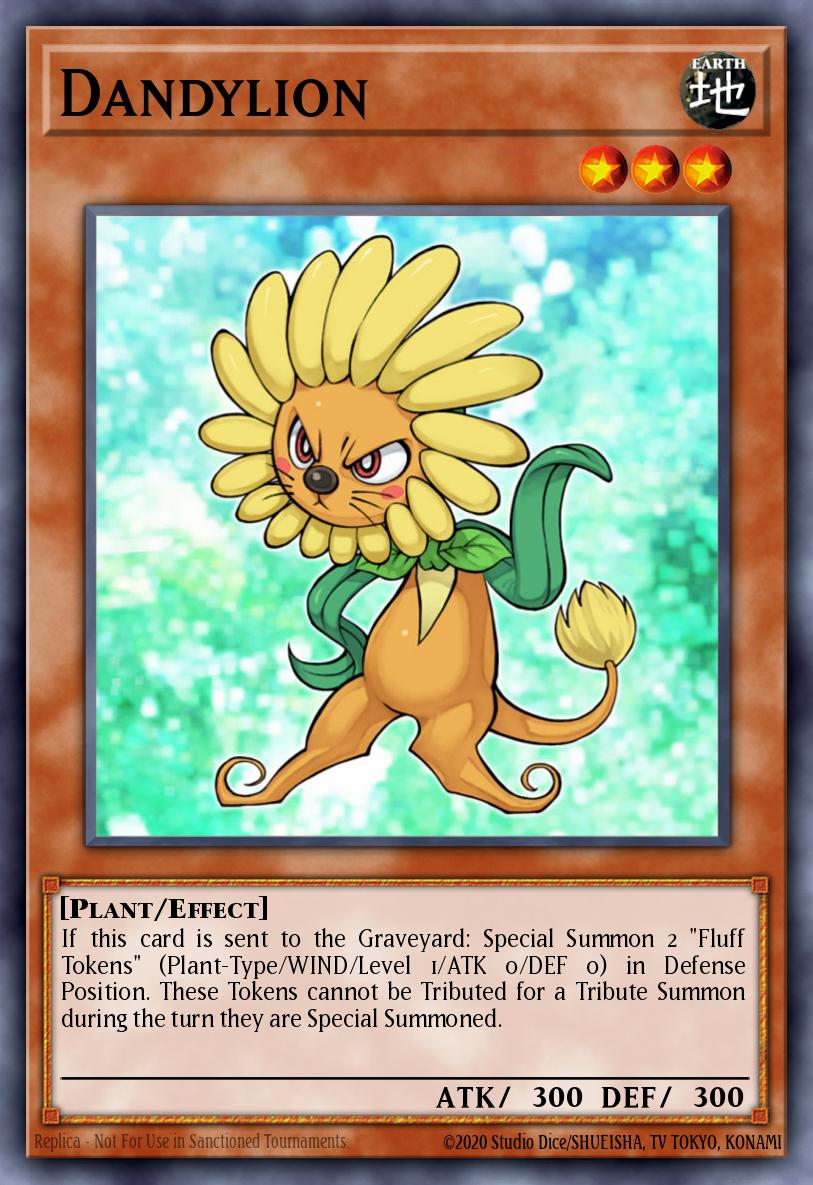
Quickdraw Dandywarrior is regarded by many as the strongest deck of the format. Although the deck looks like a weird selection of cards, it's powerful combos made it a dangerous opponent.
Quickdraw Dandywarrior's main focus was to mill Dandylion to the GY with their selection of milling cards. Cards like Ryko and Card Trooper were strong stand alone that also contributed to the milling strategy. Once the GY was stacked to your liking, Debris Dragon made it easy to summon threats from the Extra Deck while netting free tokens from Dandylion. Quickdraw Synchron was also strong because it could make Drill Warrior. With Drill Warrior being able to loop Dandylion, you could potentially spawn infinite tokens if uncontested. Outside of the Extra Deck, the deck also packed threats such as Tytannial, Caius and LADD. Grinding the deck down also proved to be a challenge with the 3 Pot of Avarice that almost every list played.
Because Quickdraw Dandywarrior had such a plethora of small interactions between cards, delivering a wide overview of the deck in just a few short paragraphs is impossible. Quickdraw Dandywarrior is considered one of the most difficult decks to play at the time and needed a strong player to pilot it to it's maximum potential.
Lightsworn Variants
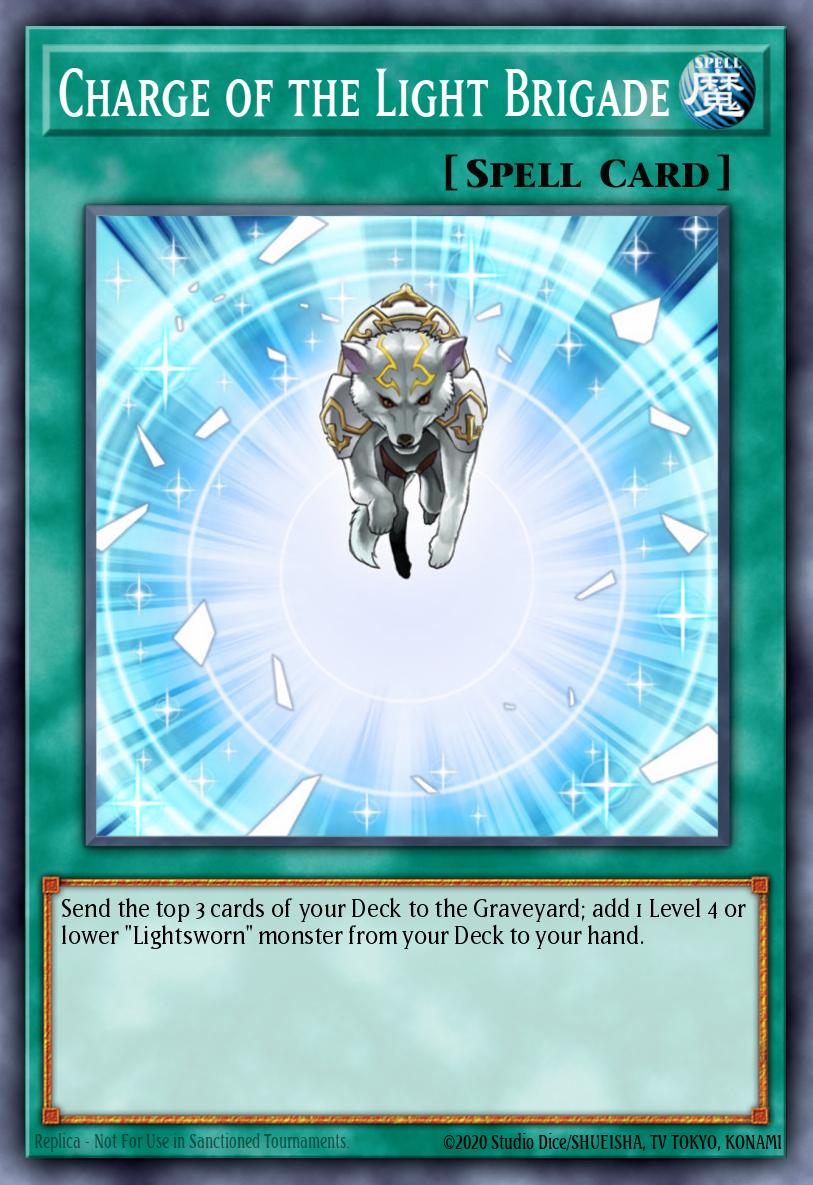
Lightsworn is a deck that took 4 spots in the Top 16 of SJC Edison and had 3 different variants among them. Although Lightsworns follow a similar game plan among the variants, small changes could change the build from pure, to twilight, to even monarchs.
As with Quickdraw Dandywarrior, Lightsworn was a deck that even more prominently needed to send cards to the GY. Lightsworn had solid cards that removed threats from the board such as Lyla and Ryko as well as big threats such as Judgment Dragon. The deck would also further capitalize on their milling style by incorporating cards like Plaguespreader Zombie and Necro Gardna into many lists. Lightsworns was also one of the few decks able to fully utilize Cold Wave to create board states where they could safely slam down big monsters to overwhelm the opponent.
Milling is one of the most fun mechanics in Yu-Gi-Oh! The biggest problem however with this is that it sometimes created problems in consistency. Without a wide variety of search cards, Lightsworn would often find clogged hands when they didn't include Charge of the Light Brigade and Solar Recharge. Despite that, Lightsworns still had a great showing and was a meta contender that could swing the game back with a single card.
Gadget Variants
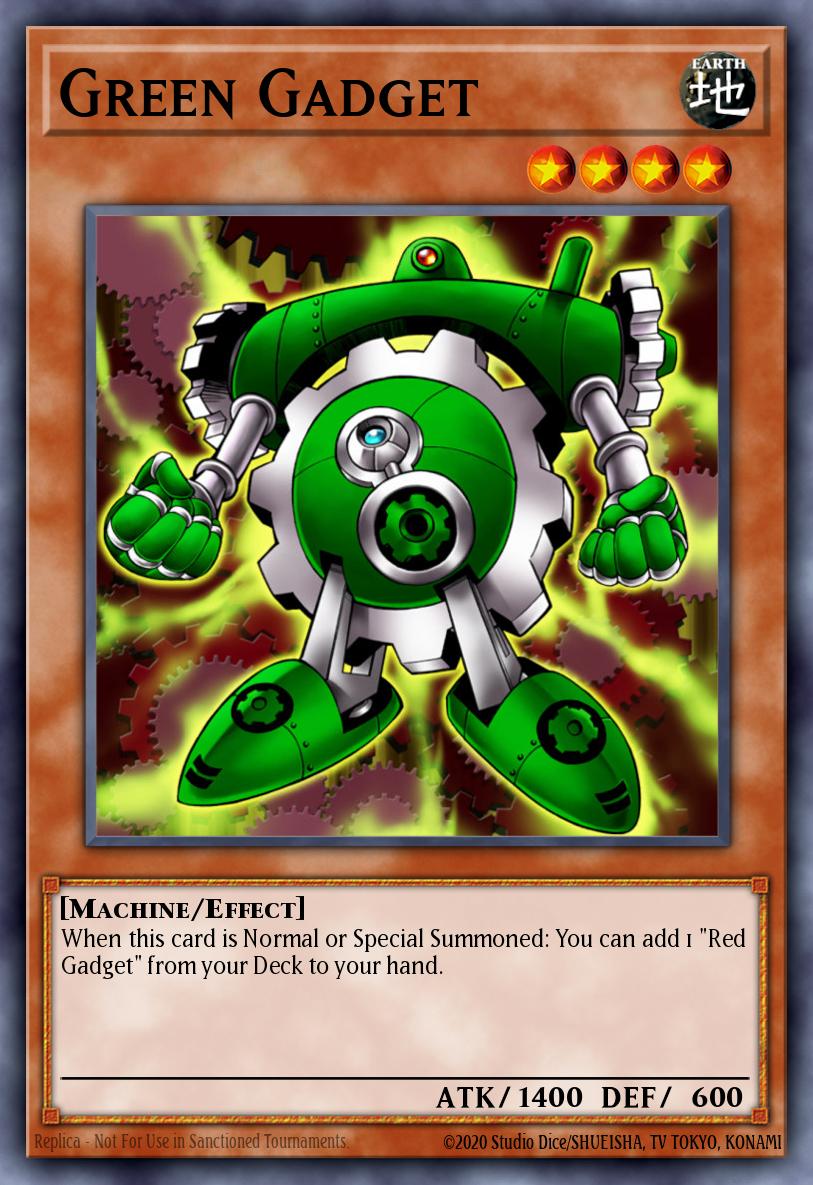
Gadget Variants all centered around the same thing. Their goal was to continuously summon Gadgets in order to gain a card advantage over their opponents. Although Gadgets are lower attack monsters, a bunch of removal spells and defensive traps helped to clear problematic monsters.
With the release of Machina Mayhem, Gadgets received an indirect buff in the form of Machina Fortress. Fortress gave gadgets some much needed pushing power while not giving up much as the deck naturally gained advantage. Cards such as Ultimate Offering also helped Gadgets quickly swarm the board at the cost of some life points. Another card that helped gadgets was Solidarity which gave a much needed ATK boost to all your small gadgets.
Having Gadgets be relevant in the game is a statement to how important card advantage was in the meta. Since the whole archetype relied on consistently obtaining more monsters, removal was necessary in order to keep up the pressure. Although Gadgets might just look like some low ATK machines, there was a reason why System Down and Cyber Dragon was so popular in the side.
Gladiator Beasts
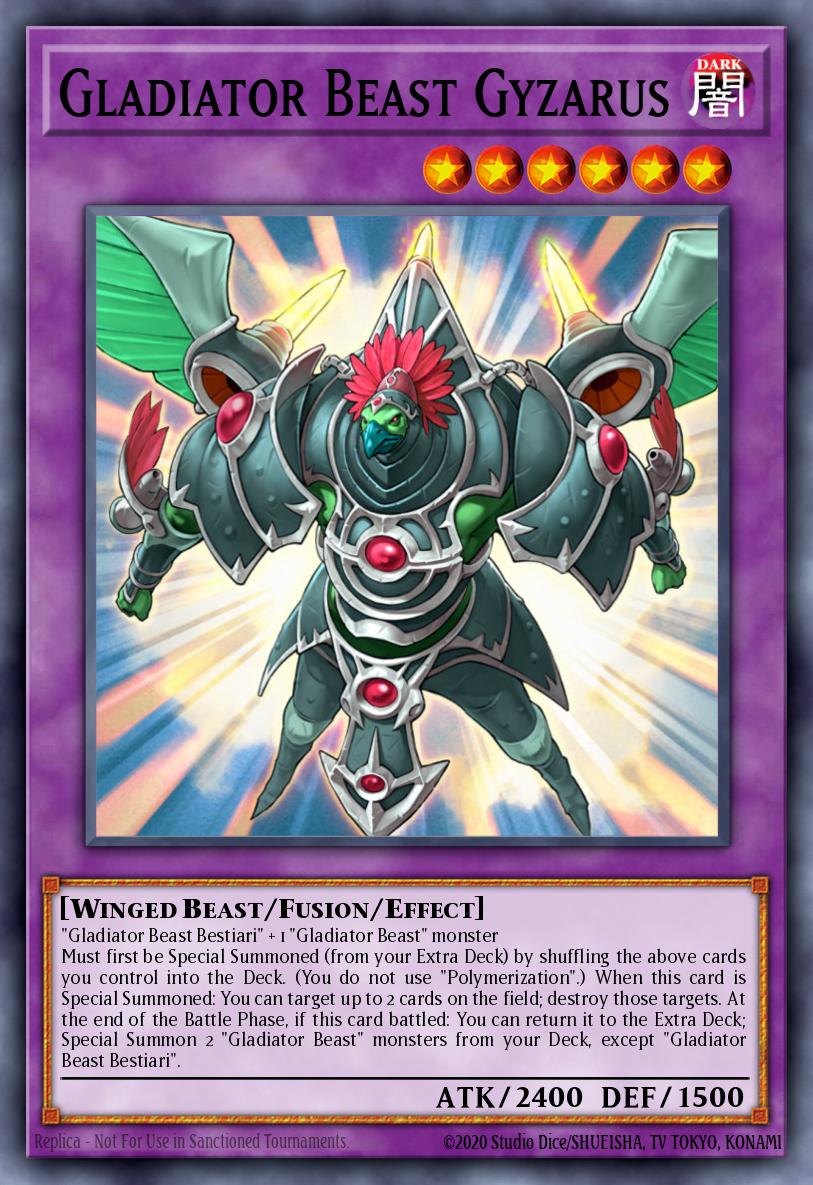
Although way past their prime, Gladiator Beasts were still a solid contender in the meta. While the deck hasn't exactly revolutionized since their initial debut. Glads were still strong at generating advantage through attacking with their power plays using Gyzarus and Heraklinos.
Even though there isn't much to mention, Glads were strong at creating advantages through using defensive backrow with a variety of powerful effects. Retiari was particularly good for banishing the many resources in the GY. The deck also was able to quickly turbo out Gyzarus using Prisma and Test Tiger which could net huge advantages if not responded to. Although not as strong as they were in their prime, Glads can be pretty scary after splashing down a Cold Wave at the start of Main Phase 1.
Blackwings
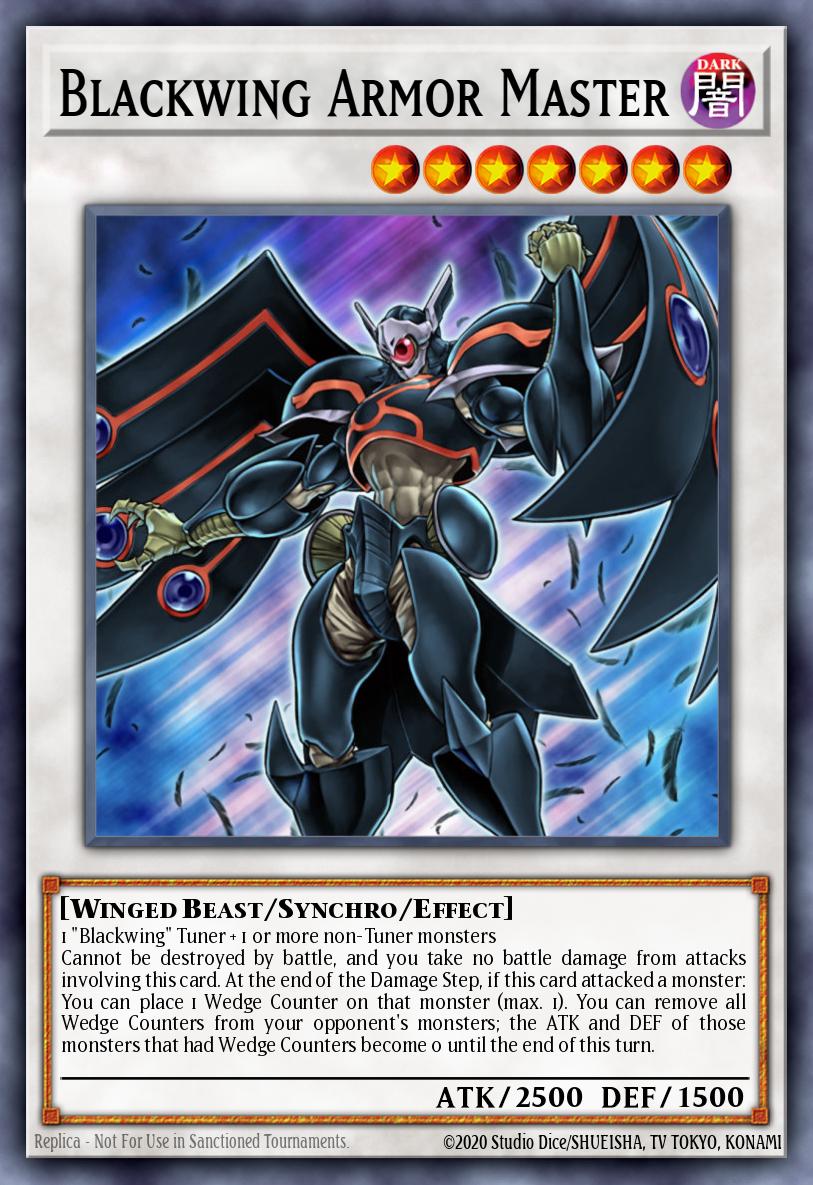
Blackwings are one of the new midrange archetypes of the 5Ds era.
Although Blackwings were hit with Gale to 1 and Whirlwind to 2, the deck was still operational playing off their swarming capabilities and strong trap cards. Blackwings were one of the 1st archetypes where it was easy to just splash your whole hand onto the field. With swarming effects built into Gale and Bora, accumulating damage was relatively easy and going into Armor Master was often even easier. Although the deck is weaker than before, Blackwings play off the strengths of Icarus Attack, Delta Crow - Anti Reverse and Royal Oppression to propel them into the front. Although a few decks could play Oppression in this meta, Blackwings could also play around it using Vayu and had solid main deck backers such as Kalut.
Blackwing's biggest enemy in Edison was the existence of Consecrated Light. With Consecrated Light being able to neutralize almost all pressure Blackwings can generate, it found itself into many sides to counter Blackwing's swarm strategy. However, Blackwings were still a solid contender in this meta and is still a fan favorite regardless.
Cat Variants
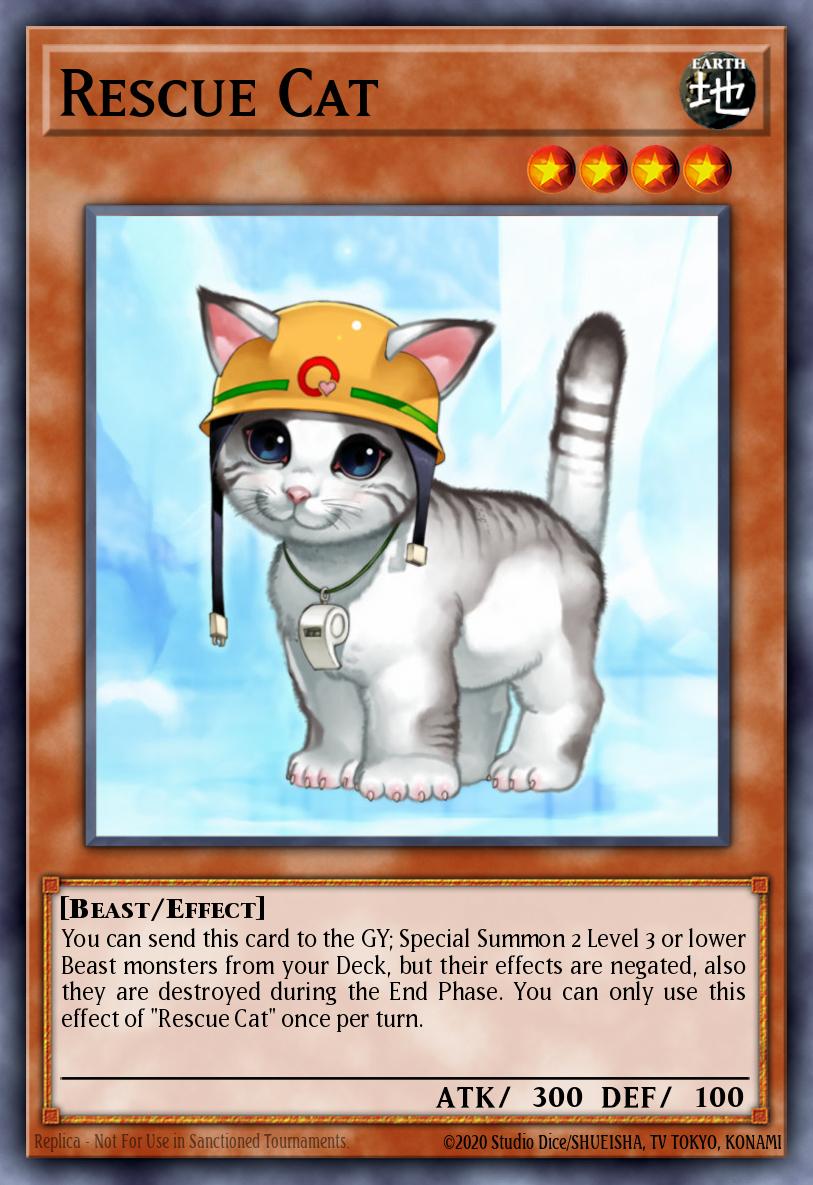
Rescue Cat was a terrifying card when it goes uncontested. Although there are many different types of Cat variants, the main strategy consisted of running a small cat engine alongside another group of solid cards.
Let's talk about Billy Brake's Caliber Cat Deck for this section. Billy's deck consisted of a small cat engine along with a Chaos Engine including Doomcaliber Knight, Ryko and other Chaos monsters. Billy's card choices gave him advantages against many matchups such as Cyber Dragon for Gadgets. Although these cards shine when used for their specific matchups, they're also a great stand-alone. Cat could summon two Airbellums which would immediately put your opponent at a disadvantage by removing two cards from their hand. By combining strong individual cards with the explosive power of Rescue Cat, Billy was able to obtain a Top 4 finish at SJC Edison.
Billy's deck on paper might just look like a standard Beatdown deck. But it followed a principle of just countering the meta and playing powerful threat after powerful threat. By incorporating cards people would usually side in the main deck such as Cyber Dragon, Billy was also able to craft a rather unique Side Deck. This Cat deck was able to slow down the game by using Doomcaliber Knight and other solid cards until an explosive Cat turn was played. However, this isn't the only Cat deck in the meta. Synchro Cat also found it's way into the Top 16 and had a very different but effective playstyle. Cat is perhaps one of the most flexible decks in the format and could definitely be a fun deck to play to surprise opponents caught off-guard.
Flamvell Synchro
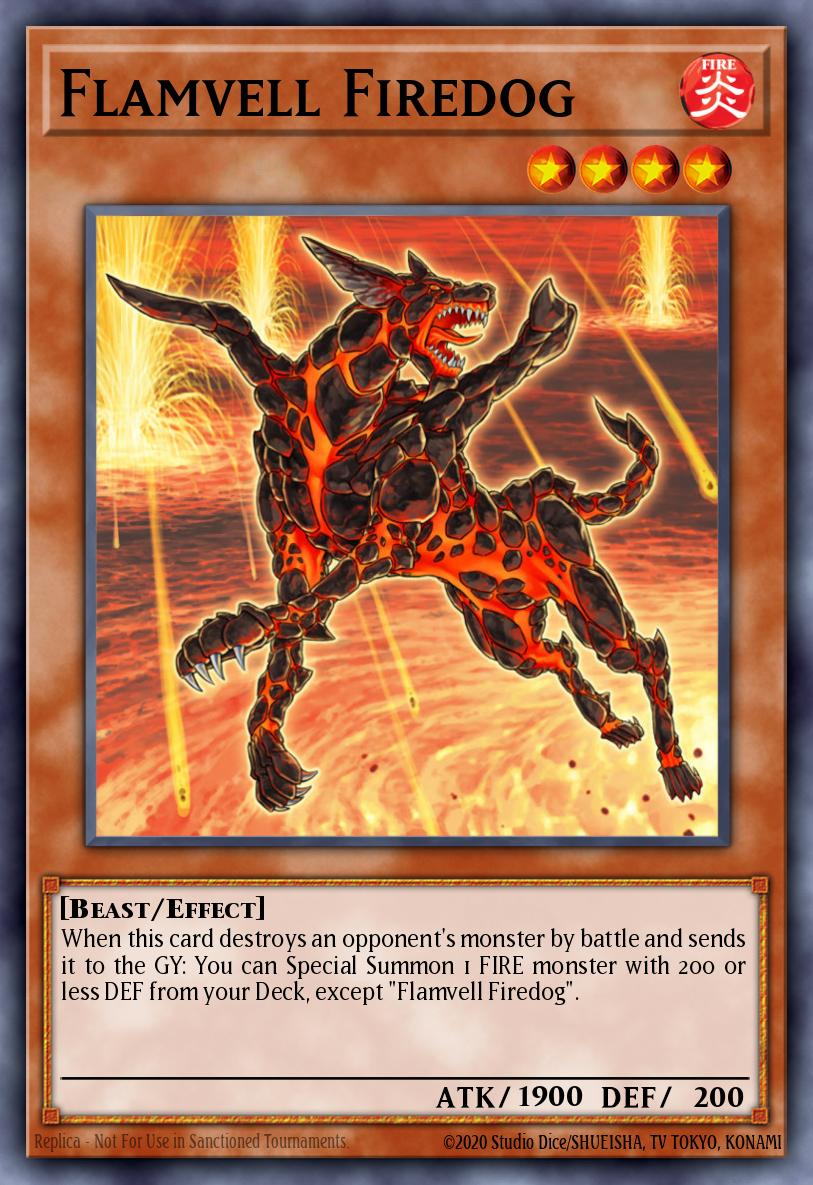
Flamvell Synchro was a deck that ran the Flamvell Firedog package to make Level 8 Synchros with other engines alongside it.
For this deck, the goal was very simple. Use Firedog to generate a Level 8 Synchro and pop Rekindling to turn the game around or go for the kill. The Flamvell deck played a similar style to what Cat Variants would play and could grind you down slowly while attempting to control the pace of the game. This deck really shows its true strength with Rekindling. Although the cost of playing the Flamvell engine was to play Flamvell Magician; a potential dead card. The rewards for playing such a card were well worth it with some of the most powerful monsters in the game being Level 8 Synchros.
Rekindling is really the star of the deck because it forces an immediate response or just ends the game. While Flamvell may be one of the more inconsistent contenders in the meta, it's explosive potential is also on the higher side of decks. Playing against Flamvell is very scary as you always need to be ready for a surprise Rekindling.
Gravekeeper Burn
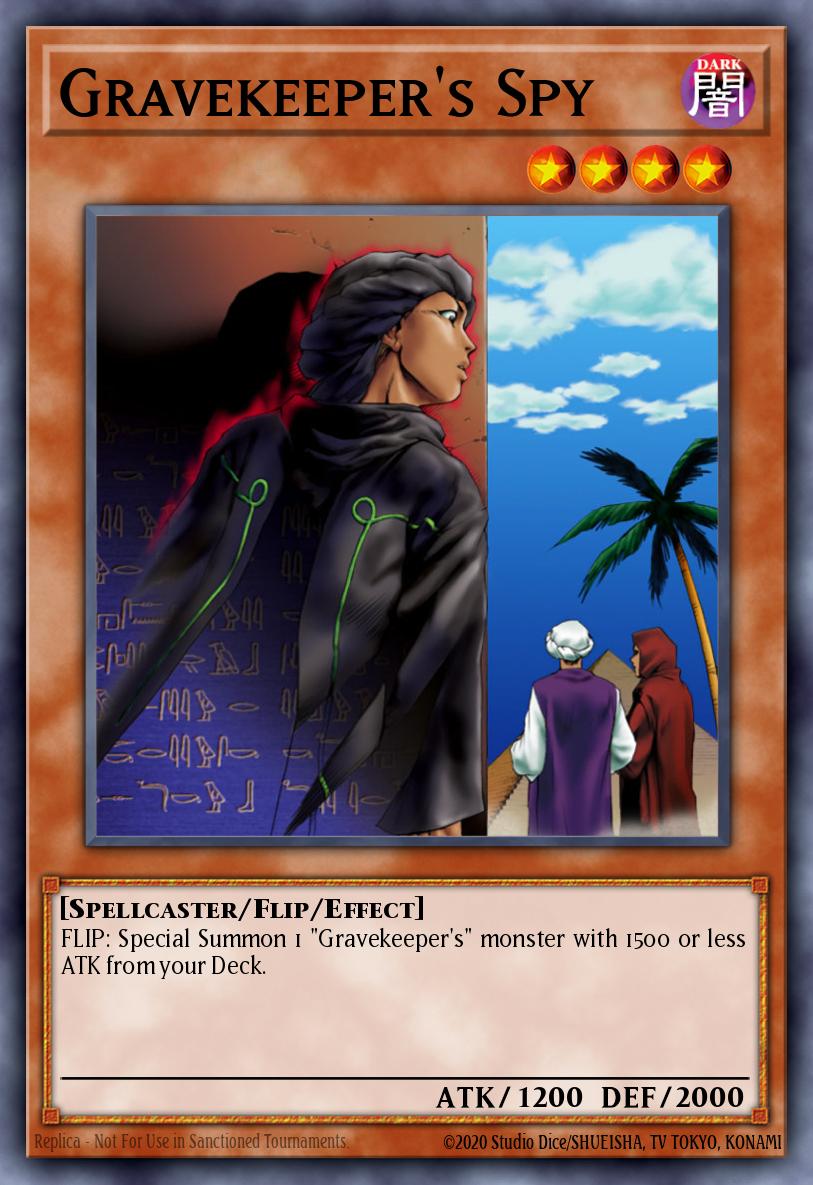
The Gravekeeper Burn deck piloted by Rex Mendoza is one of the weird decks that acted as a stall burn deck with a semi-defensive beatdown engine.
While there isn't much to explain, this deck basically played a bunch of defensive and burn S/Ts alongside a Gravekeeper engine. The deck could also play aggressively if they were able to catch you with an early Royal Tribute and then quickly beat you down with Spys while sitting behind a wall of backrow. This variant also sided into a Cat engine that could catch opponents off-guard and steal games.
Since I don't have any personal experience with this deck, I could only imagine how it operated. This deck doesn't have as much of a "fun" playstyle compared to the other decks in the meta. At least the build is interesting. Even if it looks boring on paper, results are results and maybe some further testing could turn Gravekeepers into the Dark Horse of this amazing meta.
Closing Thoughts
Edison is a great format with a lot of variety in the meta. It was a format where you didn't need to play the best deck to win and you wouldn't be an overwhelming underdog if you choose too. Although it lasted such a short time, it had a lot of the elements that players would come to enjoy. Interaction, outplays, management of resources were all very prominent in the top level of play during this time.
Personally, I'd recommend this format to anyone who wants to take a break from the modern style of play or is just looking for a past format to play. There are many resources online to help you learn more about the format online including lists of the Top 16 on the official Konami page and numerous threads across the web. Although I personally was not able to play competitively during this format, I'm still having a blast playing it among friends today. I urge you to give this format a shot and see if you enjoy it.



